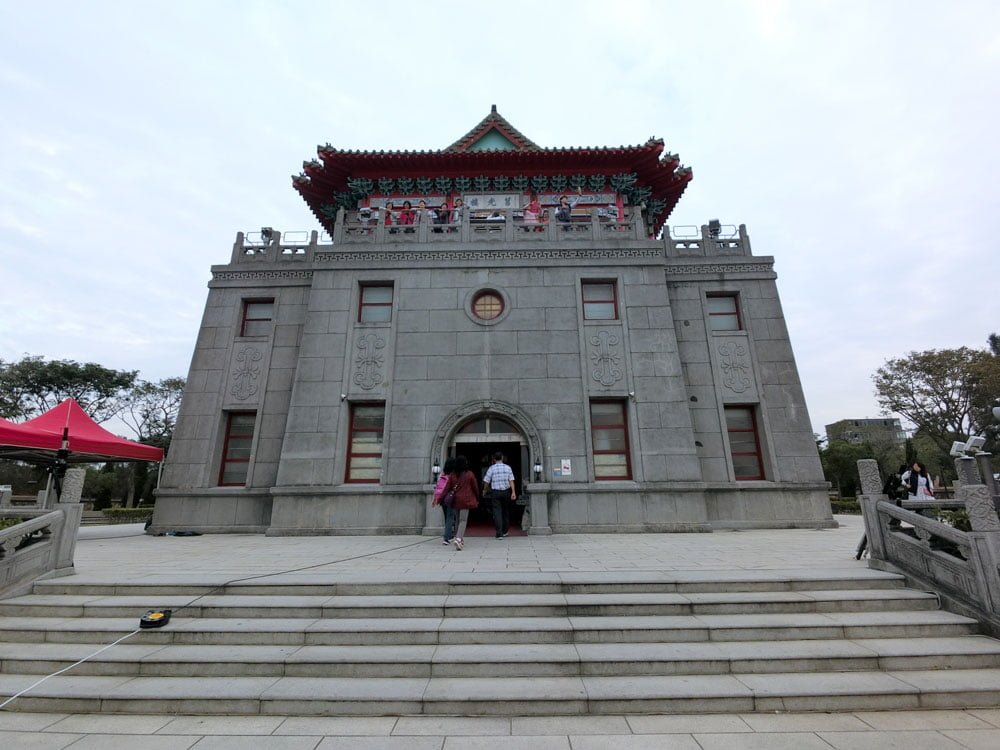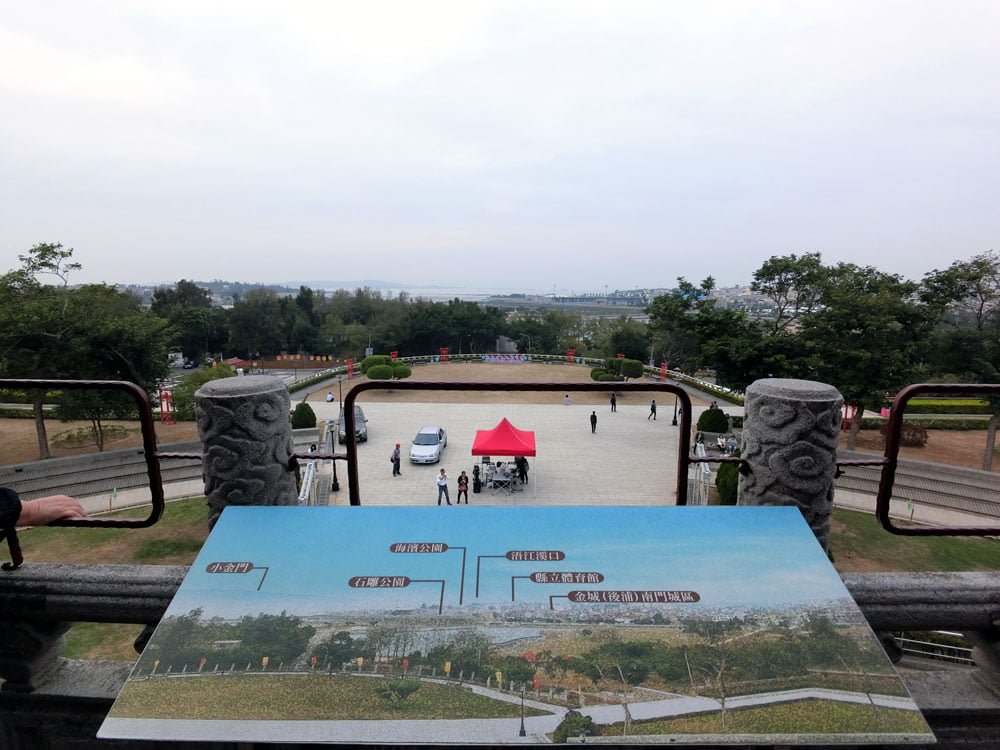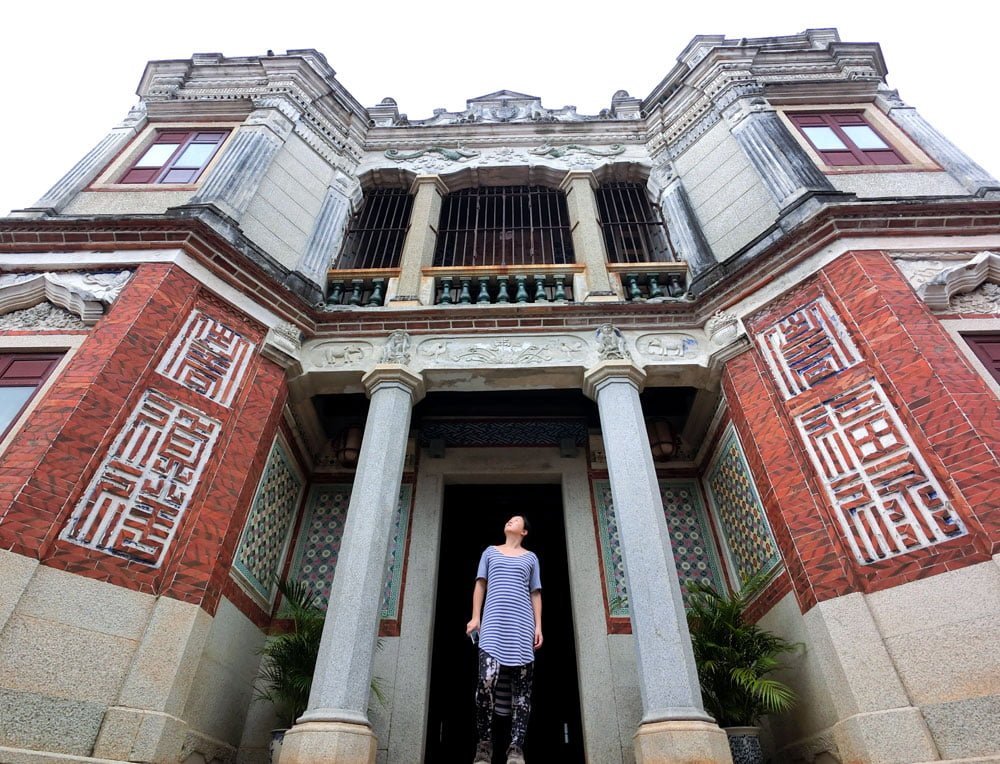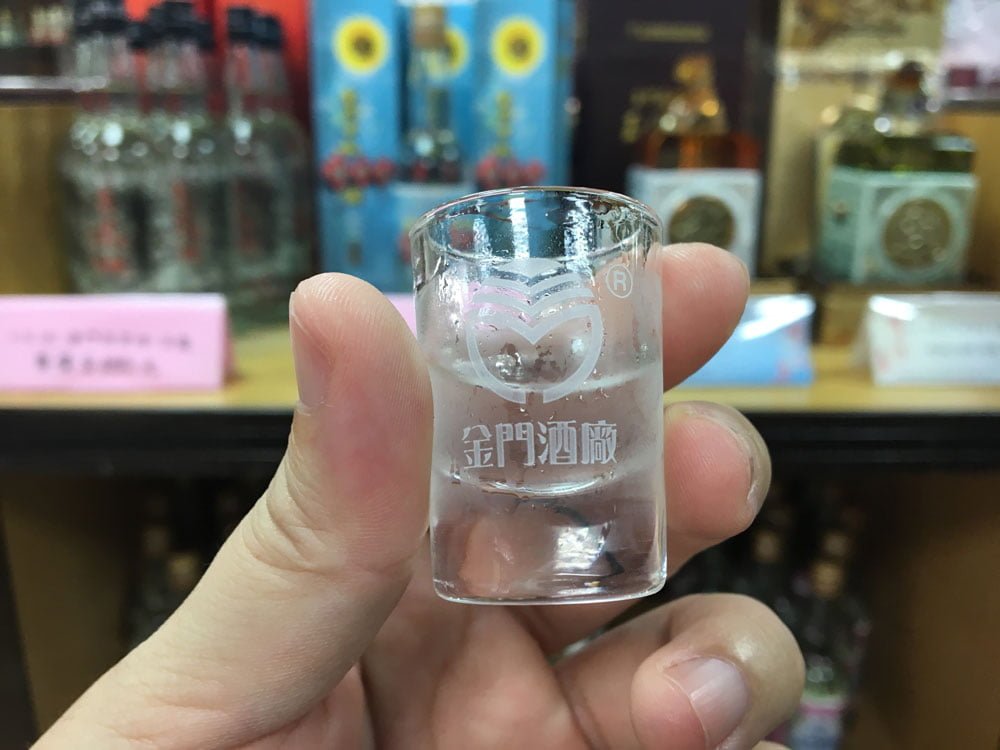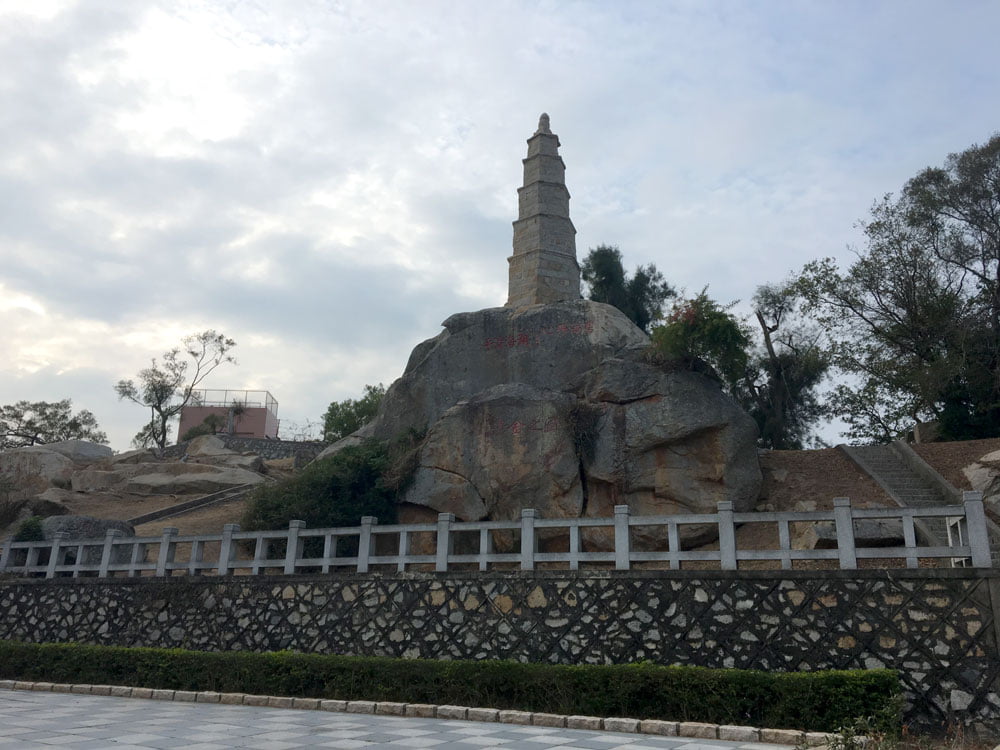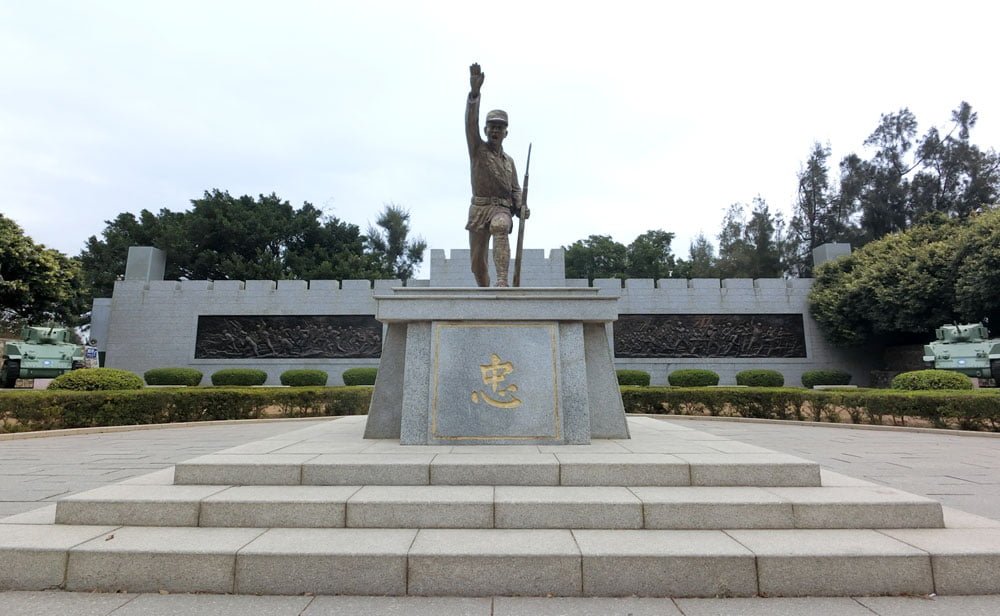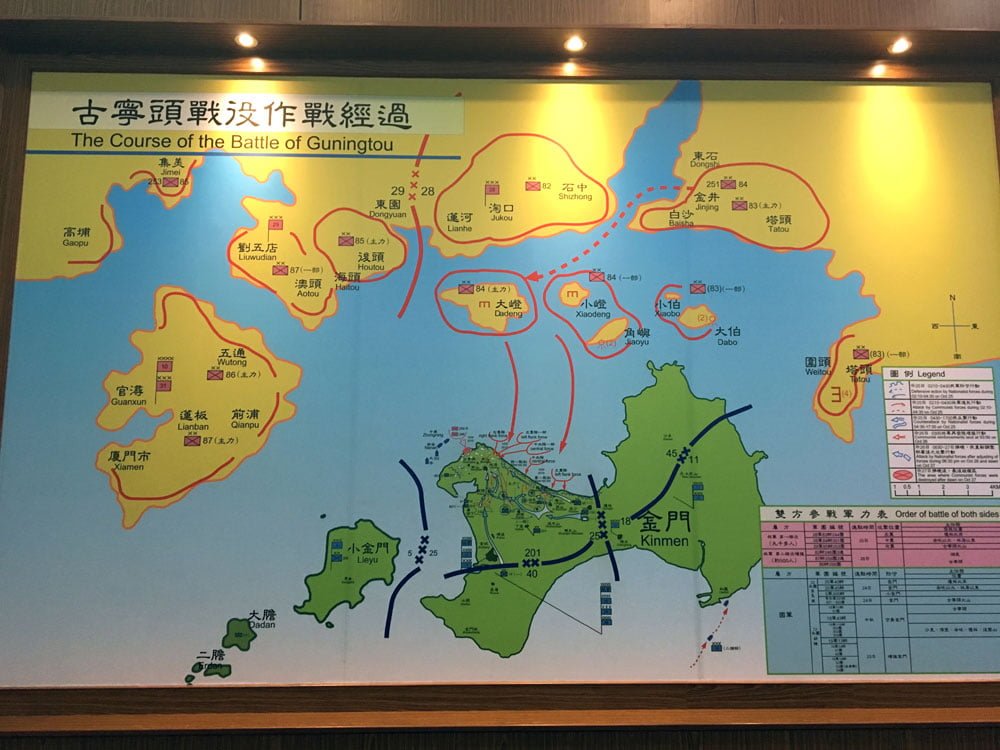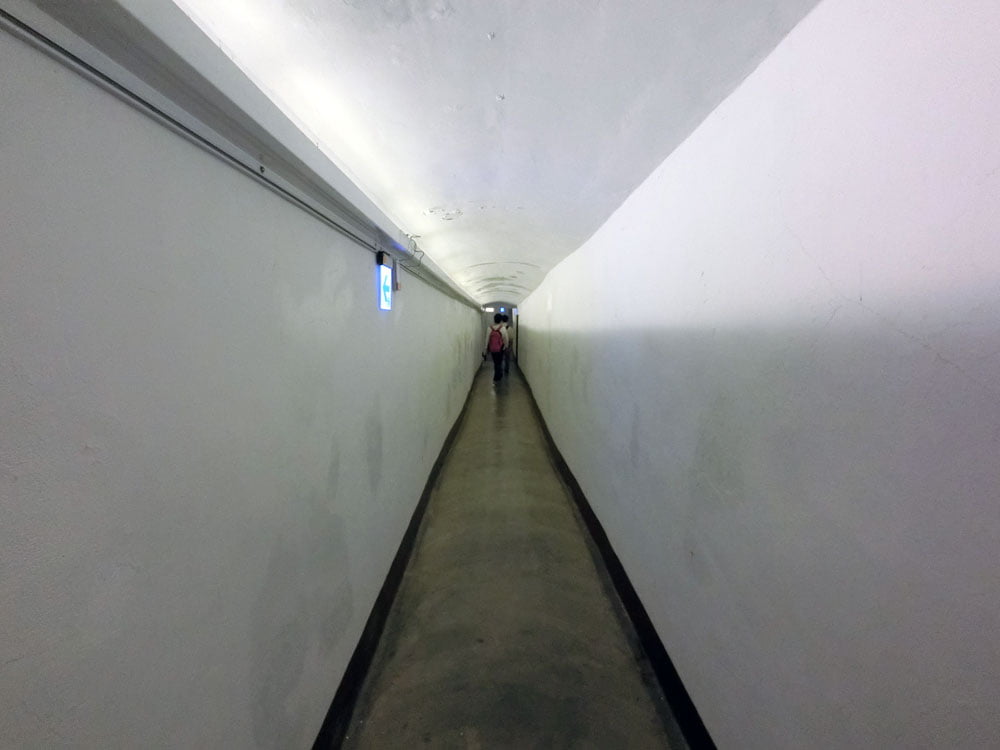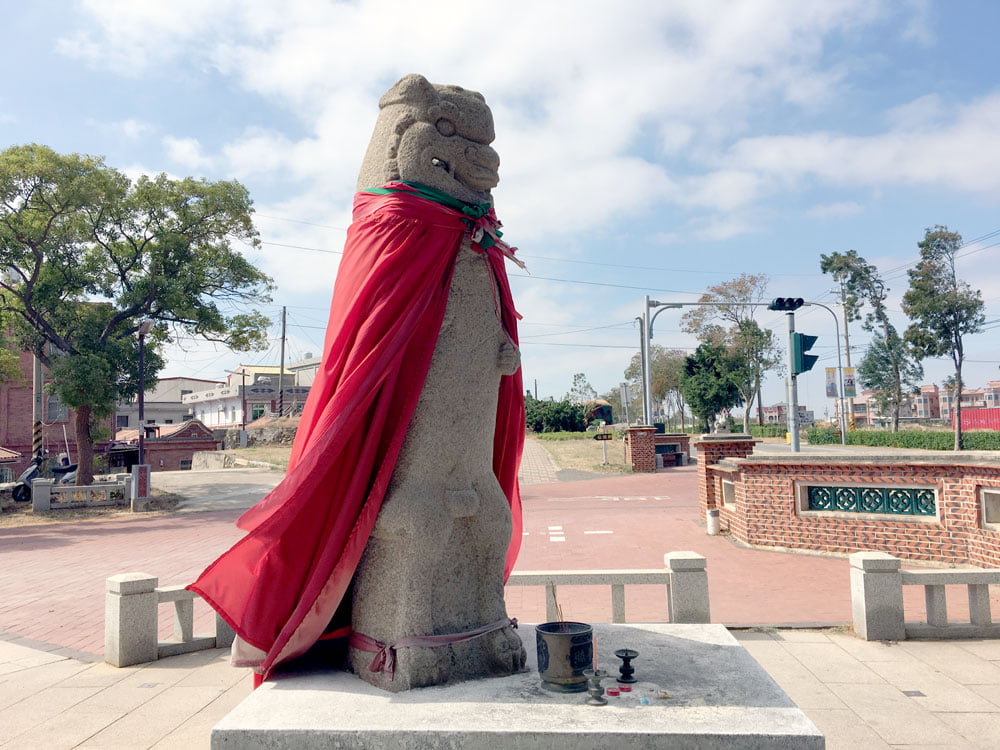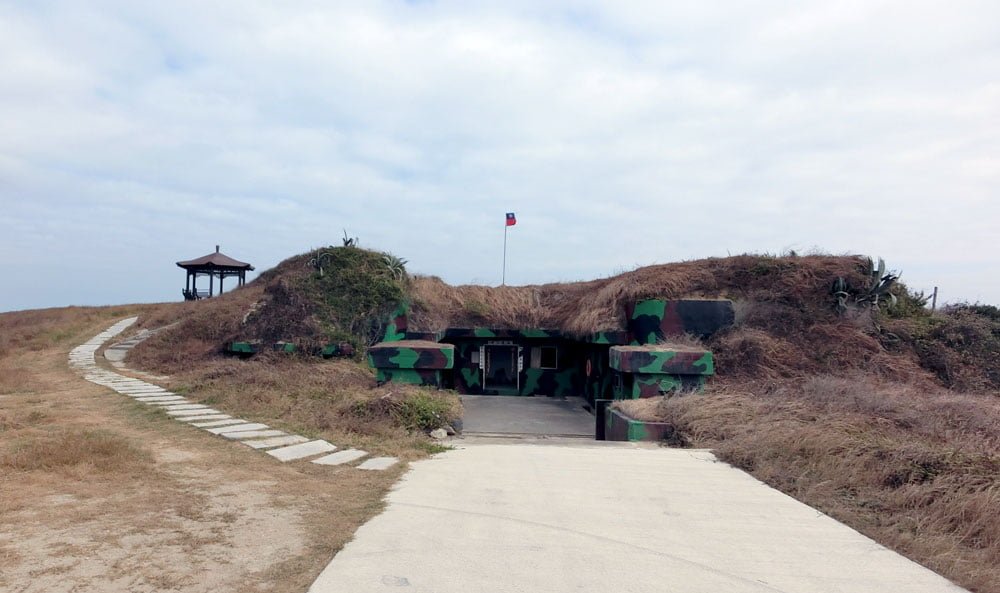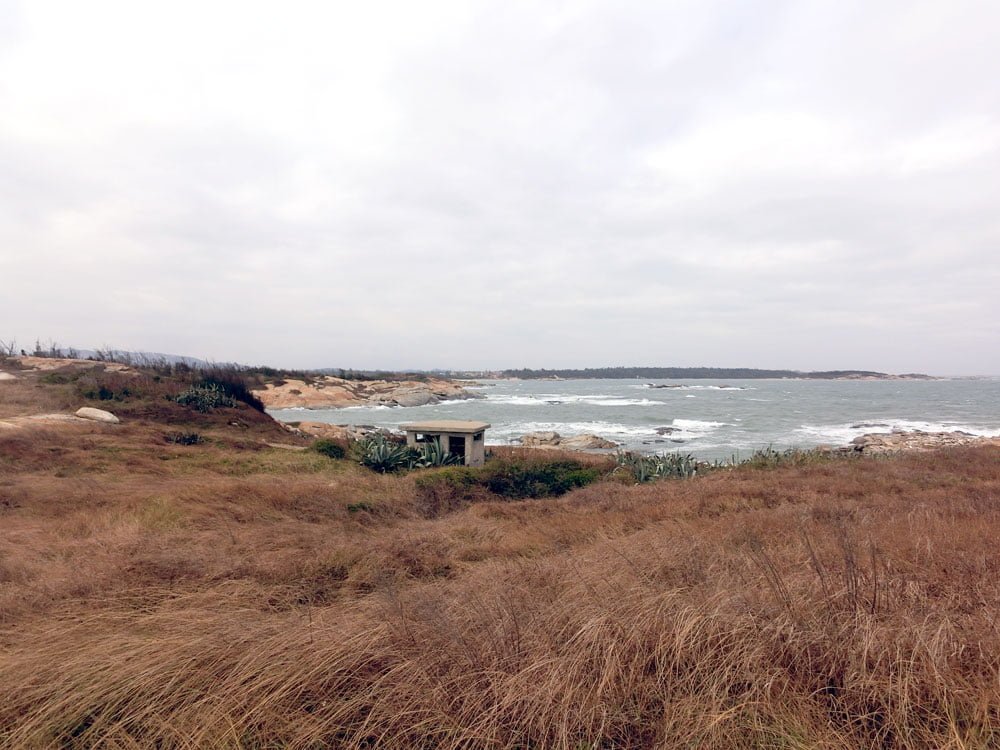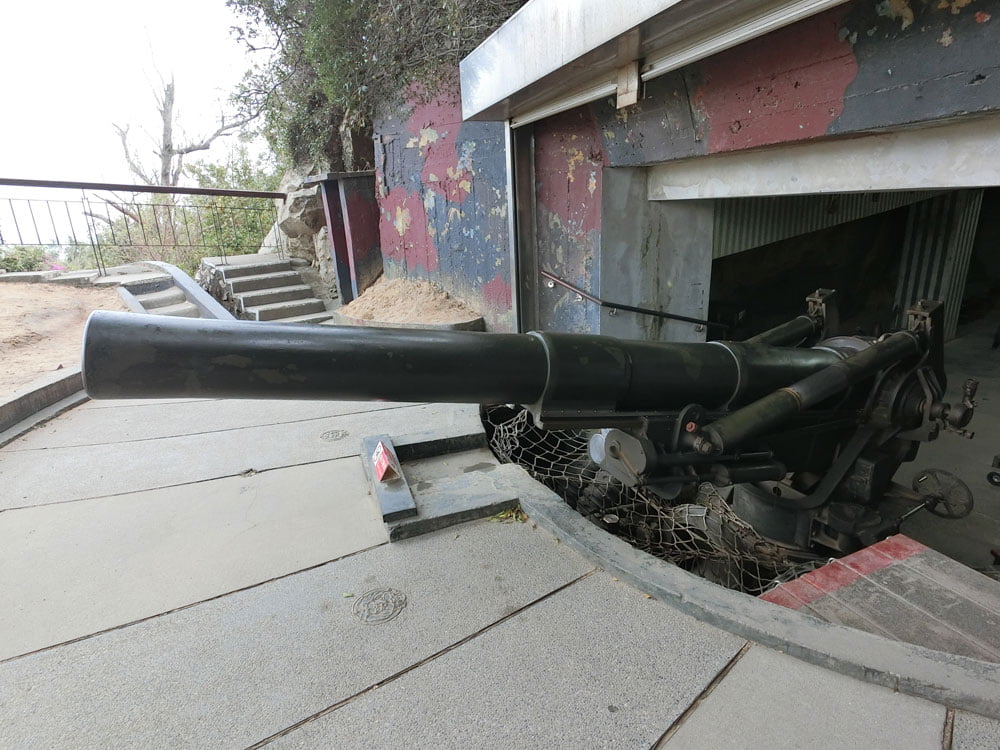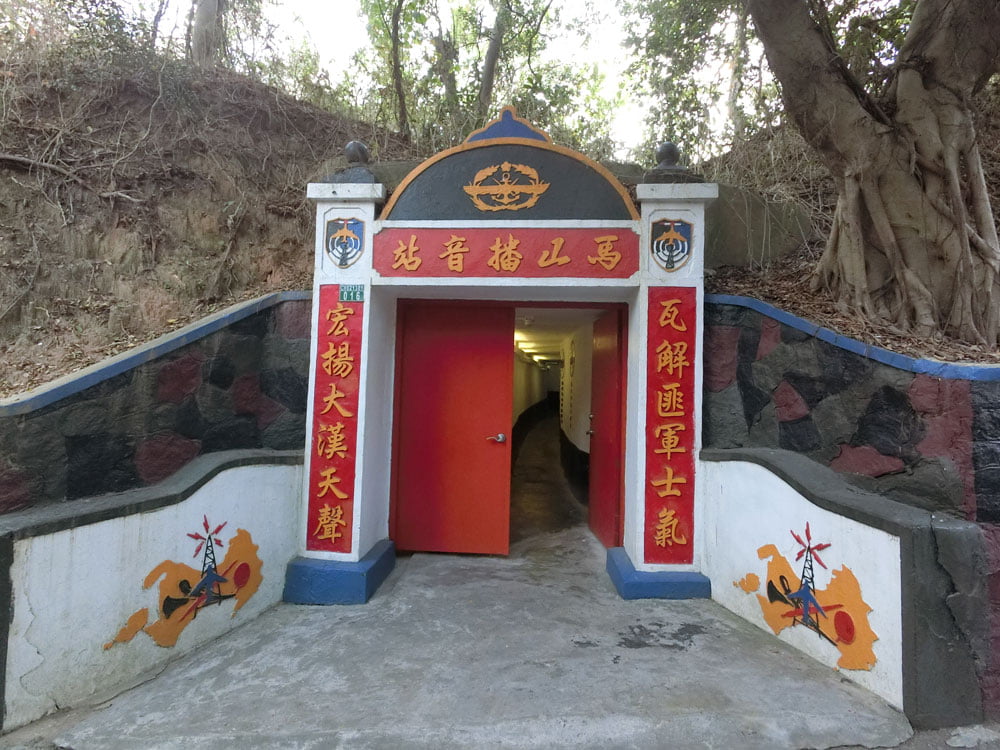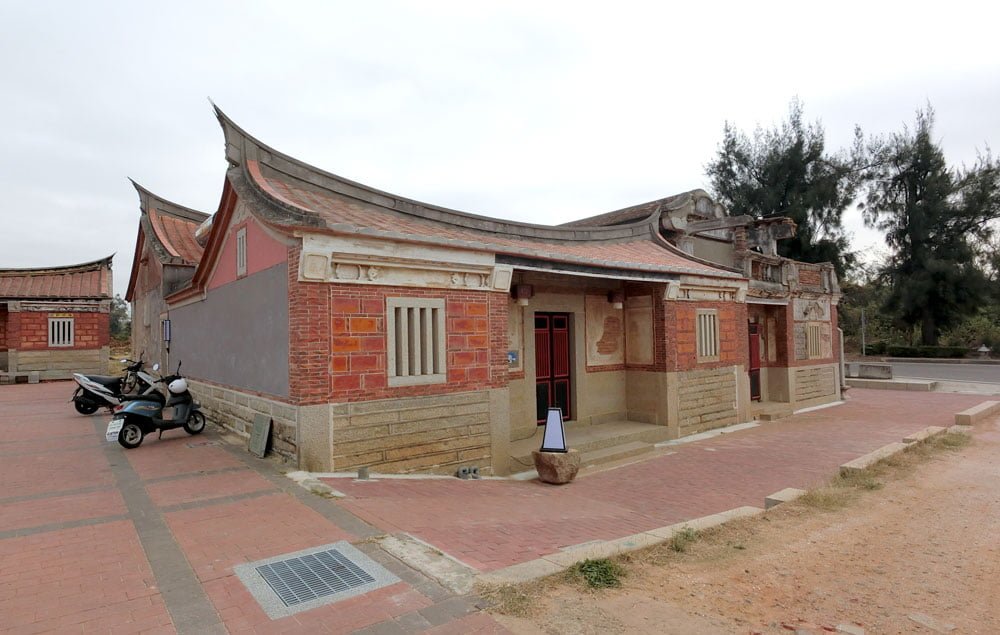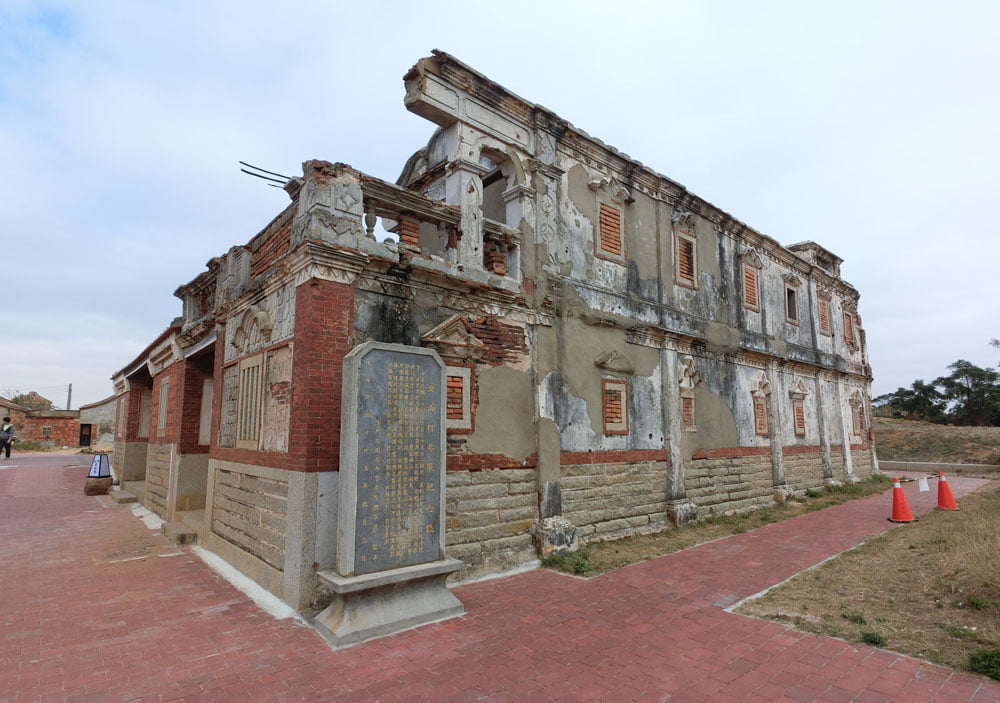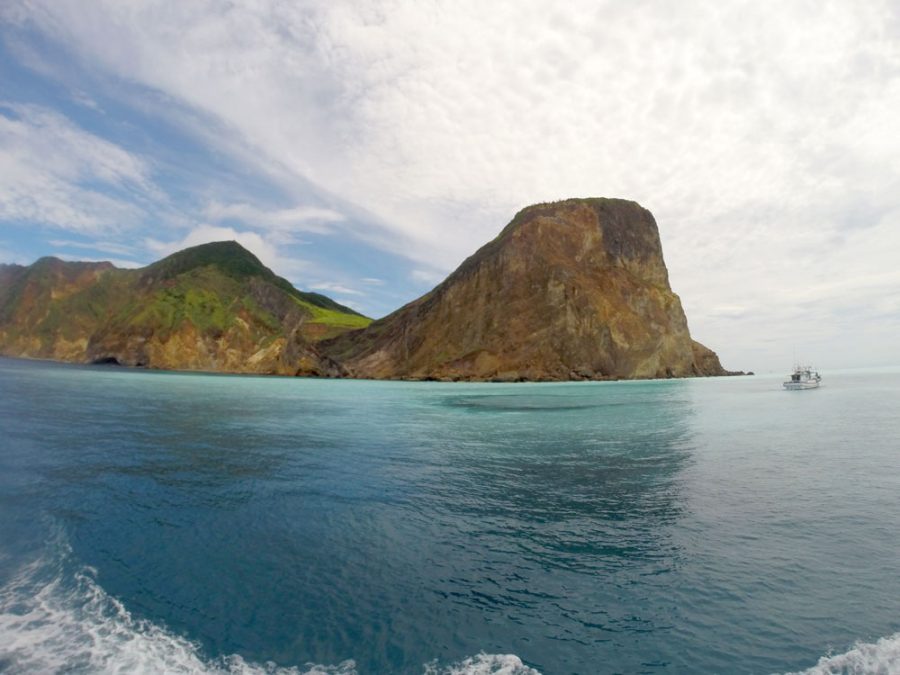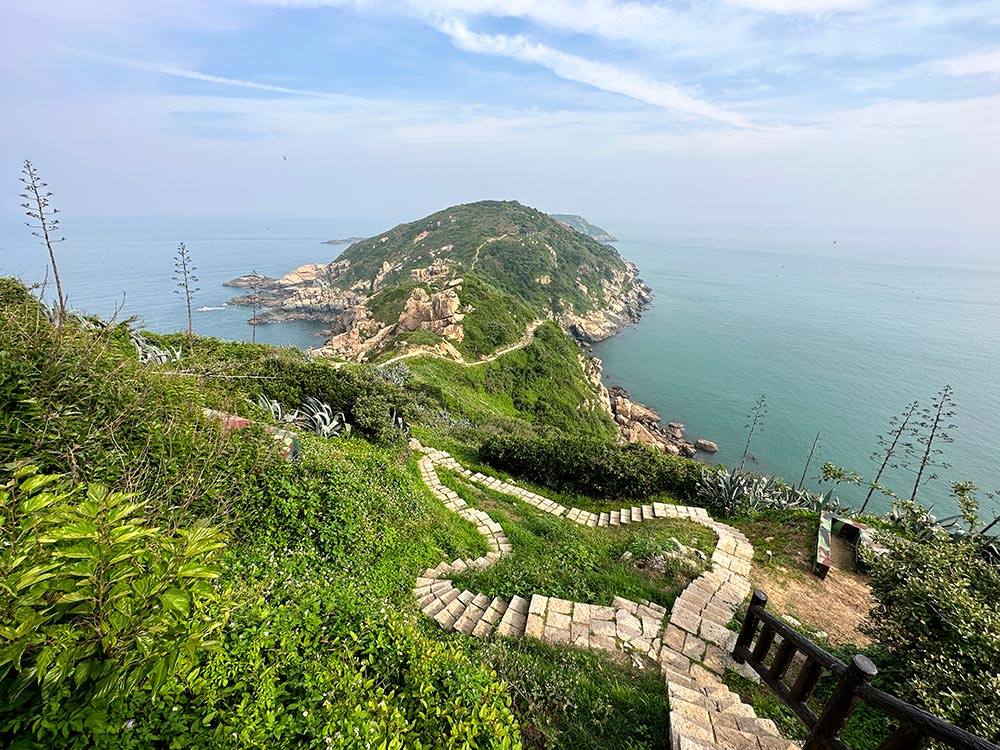If you are looking for an unusual side of Taiwan to check out, try heading over to Kinmen 金門 Island. Exploring Kinmen feels like a step back in time with original style Fujian buildings and lots of green space. History lovers will be fascinated by the many remnants of Kinmen’s past conflict with neighbouring China. I spent a few days solo in Kinmen and put together this little guide on what to see and things to do in Kinmen.
Why Kinmen?
I like nothing more than renting a scooter and exploring the nooks and crannies of Taiwan’s many offshore islands – I’ve explored Lyudao and Lanyu off the eastern coast of Taiwan and they turned out to be some of my all-time favourite places in the world and I wanted to see more. So on my trip to Xiamen, I decided to pop by Kinmen since it’s actually closer to China than it is to mainland Taiwan, similar to that of the Matsu Islands.
Kinmen is great for indie travellers who like a very chillax itinerary and the small town/country life. It is very budget friendly as stuff is generally inexpensive and I didn’t have to pay a single entrance fee for the sights.
Things To Do In Kinmen
I spent 3 days zipping around the island on my scooter to see what I could find. Most of the more interesting sights to see on Kinmen have to do with its war history and Fujian heritage, but there are some pretty natural sights worth checking out as well. I’ve split the guide up by Kinmen’s main districts – check out my Google Map for more info.
Jincheng 金城
This is the central area of Kinmen – Jincheng town is the busiest area in Kinmen and where you are most likely to find some life and the most meal options, especially in the evenings.
Jincheng Walking Tour
According to my hostel owner, this walking tour called the Beautiful Houpu Walking Tour (Houpu is the old name of Jincheng) is the only activity that happens at night in Kinmen because there just isn’t much nightlife here. Head to the Kinmen Military Head Quarters of Qing Dynasty to sign up for this tour that takes you on a bit of a walk around Jincheng to see some famous old buildings and give some insight into the history of Kinmen and its architecture. This building is pretty fascinating in itself – it’s home to a really old and huge tree and while has had many uses, and now currently is a bit of a museum and the county administrative office.
Details: The tour starts every evening at 7.30pm and is free/tips-based, you just have to show up. The tour is conducted only in Chinese, so if you don’t speak English, maybe just check out the route listed and explore for yourself.
Juguang Tower 莒光樓
The first attraction I visited in Kinmen is this tower just south of Jincheng. It looks a bit like a temple perched on top of a mini fort because of the classical style. This three-storey tower has a mini exhibition inside (and some pretty awesome roof deco) that pays tribute to Lai Sheng Ming, a war hero from the battles for Dadan and Erdan, 2 smaller islands close by. There’s a pretty nice view of the west coast from up there.
Open 8am – 10pm
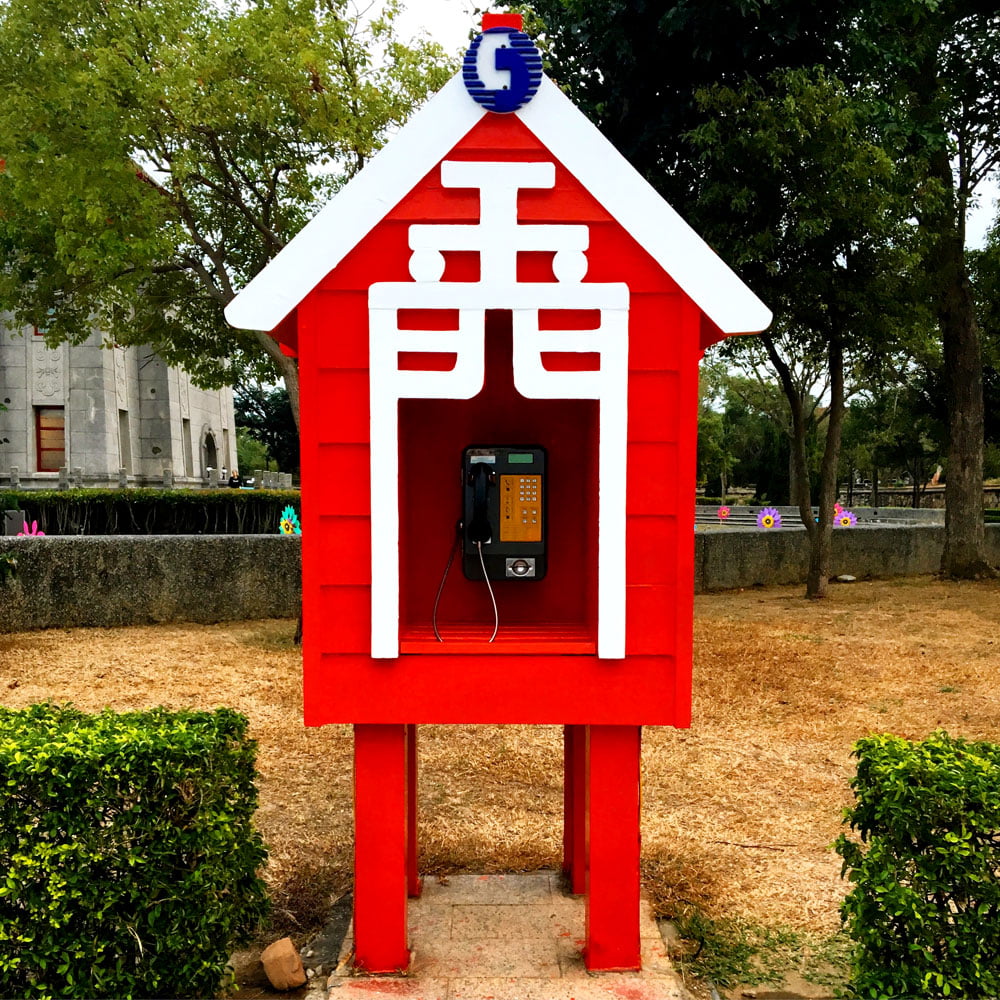
Shuitou Village 水頭
Shuitou Village is pretty close to the port and it’s quite easy to spot thanks to the giant bottle of Kaoliang Liquor right at the junction. It’s a quiet little village with over 700 years of history, home to some of the richest overseas Chinese who sent money home to build some of these interesting old architecture that’s a mix of Chinese and Western inspirations.
I stopped at Jinshui Elementary School 金水國小 which was the largest school building in Kinmen. It has since been turned into a museum of sorts and has lots of exhibition panels in its many little rooms explaining the history of Kinmen and its people.
Jinshui Elementary School: Open 8am – 5pm
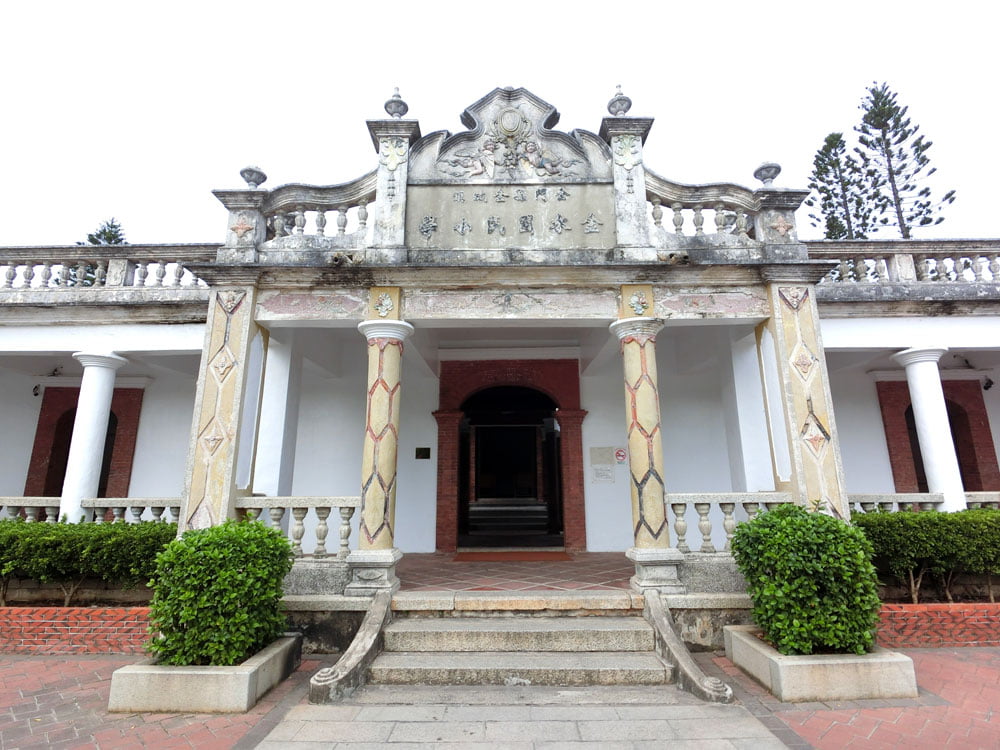
Right behind the school is Deyue Tower 得月樓, 11+m high and built back in 1931. It is actually a gun tower 4-storeys up for military defence against pirates and is one of Kinmen’s tallest structures. I didn’t go up the tower, but apparently the steps are portable wooden steps so in the event they were attacked, they could climb the tower and pull up the stairs so their enemies couldn’t follow!
Deyue Tower: Open 830am – 530pm
Next to Deyue Tower is another house called the Overseas Chinese Culture Museum, and has more exhibits detailing the life and times of the overseas Chinese back in the day. It was pretty cool seeing how some Singaporean and Southeast Asian culture was transmitted back by these overseas Chinese people. Western style houses in particular were influenced by the Colonialists of the time and became a symbol of wealth in the Chinese community.
Overseas Chinese Culture Museum: Open 8am – 5pm
Kinmen Kaoliang Factory & Museum
One famous product from Kinmen is Kaoliang or Gaoliang alcohol. This clear alcohol usually comes in anywhere from 38-58% proof and is pretty damn strong. I popped into 2 places to check out some Kaoliang for myself – it basically reminds me of vodka and fun fact – Kaoliang is apparently one of Taiwan’s top exports right now and most of it is produced here in Kinmen.
First I ended up at the Kinmen Kaoliang Factory, and while you can do a short guided tour around the factory twice a day, I didn’t know that so I ended up just heading to the shop and trying a little bit of the 58% Kaoliang – wooh baby that was strong stuff.
Open 8am-12pm, 130pm-530pm. The factory allows 100 pax to enter their premises twice a day at 9am and 2pm (50 minutes and free! More here)
Just around the corner from the factory is a very traditional Fujian structure which also turned out to be the Kaoliang museum. It’s free for you to wander around in – it shows the more traditional way that Kaoliang is brewed, and there’s a video documentary on the brewing process as well.
Zhaishan Tunnels 翟山坑道
I visited the Zhaishan Tunnels very close to closing time so unfortunately I didn’t have a lot of time to spend there. These underground tunnels that headed out to sea were blasted out of granite in the 60s and meant to protect military boats.
When you enter these days, you are greeted with classical music that reverberates around the tunnels as you walk in – there is an annual symphonic music festival called the Kinmen Tunnel Music Festival that takes place right inside these tunnels.
Zhaishan Tunnels: Open 8am – 5pm
Other spots I stumbled across en route to these two places that you can check out if you have enough time:

Jinning 金寧
Jinning in the northwest is the district that I stayed in and notable as the area where the main fighting took place on Kinmen. Some of it is protected under the Kinmen National Park.
Guningtou War Museum 古寧頭戰史館
Guningtou is most famous for its war museum that was built to commemorate the fateful battle back in 1949 between the Communists and Kuomintang Nationalists. This was one of the sites of the battle and you can learn more about it from the various exhibits in the museum.
Don’t just stay within the building – take a walk along the tunnels to the external parts of the museum and get a closer look at the surrounding area.
Guningtou War Museum: Open 830am – 5pm
Cihu 滋湖
There’s a lovely lake called Cihu or Ci Lake, an artificial lake that was created in the 70s. On a good day you can see Lieyu and even Xiamen from here, but most of the time it’s great for birdwatching with over 200 species.
Triangle Fort 三角堡
You can explore the Triangle Fort 三角堡, a 3-sided military base that faces Xiamen. It’s a pretty small structure that you can enter and see what it’s like to peer out of tiny holes, and right now you’ll also see the tanks and barriers that were erected on the beach to prevent intruders, as well as the bridge that they are building to reach neighbouring Lieyu Island.

Jinhu 金湖
If you fly into Kinmen, you’ll end up at the airport located in Jinhu on the southeast portion of the island.
Qionglin Tunnels 琼林坑道
Qionglin is located right in the center of Kinmen and is known for having many shrines, but also these famous towers that you can enter from the Village Office. There used to be 12 different exits though this time you can go in 2 directions – one side leads you across the road, while the other brings you a little distance behind the office building to the Qionglin Wind God statue.
Qionglin Tunnels: Open 830am – 5pm
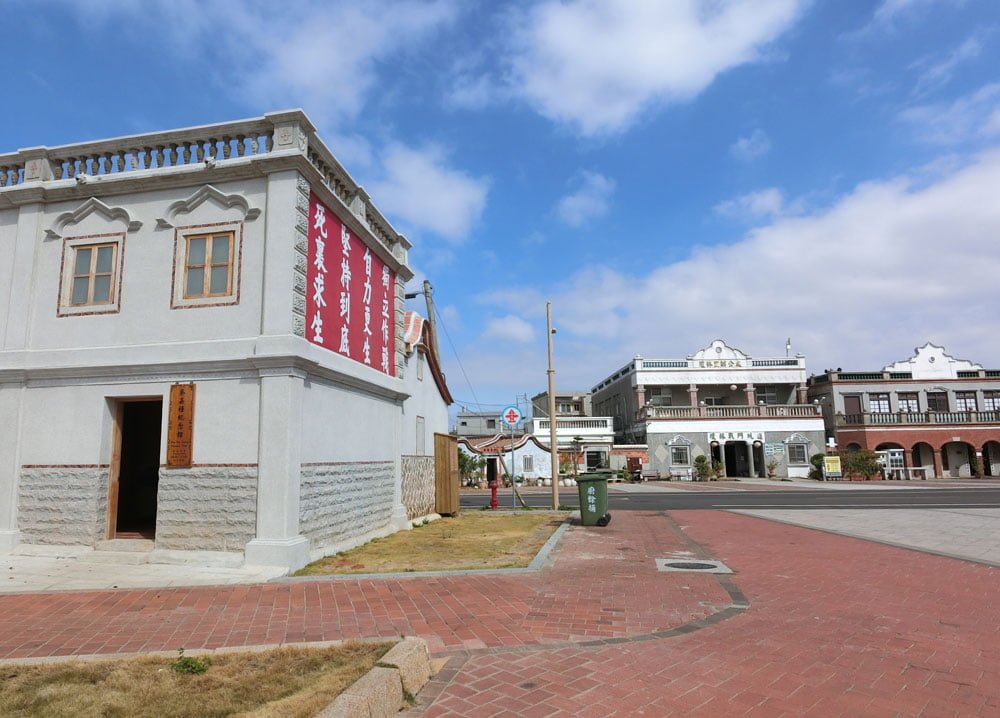
Military Brothel Exhibition Hall 特約茶室展示館
Near the Lanhu Reservoir is this rather small and unassuming museum which details a less often seen side of war regarding the prostitutes and military brothels that were set up during the war. I thought it was quite interesting even if it was small, seeing the rooms that were used and the portraits of the girls on the wall. Here’s a fun fact – the Chinese name of this place translates into ‘special teahouse’.
Military Brothel Exhibition Hall: Open 830am – 5pm
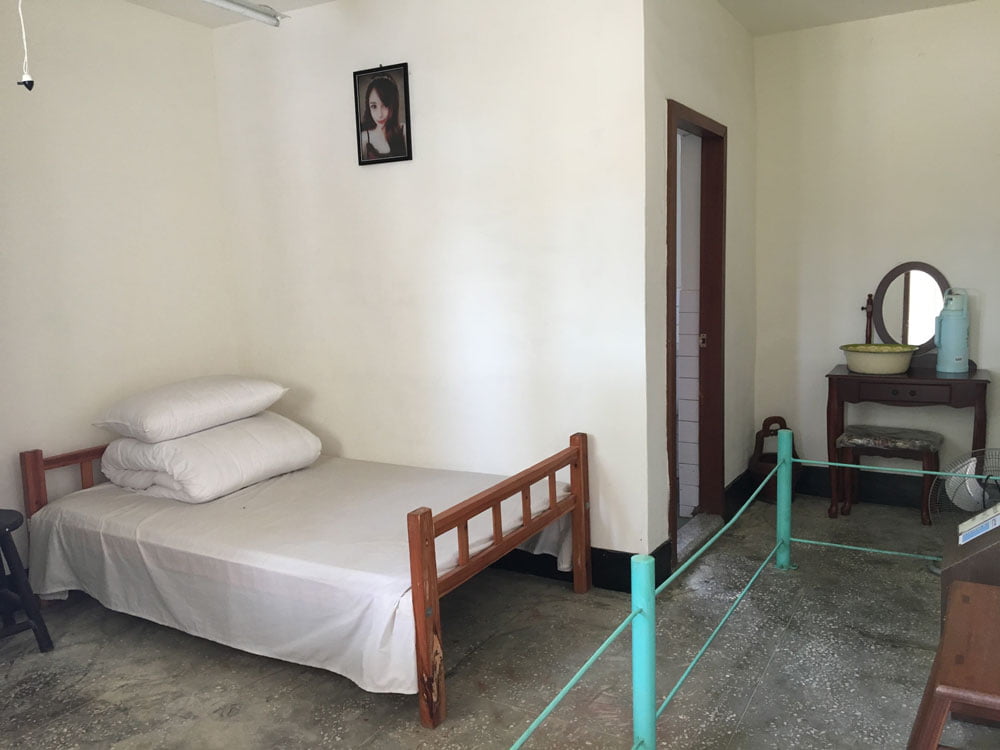
Somewhere in Dongchun
I don’t know what this place is exactly but it’s somewhere I came across while cruising through some backlanes on my scooter. A random military bunker right next to the coast, I like it because it was completely deserted (I was not going into any of those rooms on my own) and I could chill out and enjoy the sea view for a bit.
Jinsha 金沙
Some of the more impressive military bases in Kinmen can be found here in Jinsha in the north-eastern end of the island.
Shishan / Mount Lion Howitzer Base 獅山炮陳地
Shishan or Mount Lion makes for an interesting visit not only because of the range of artillery like the howitzer guns that you can see up close, but because of the daily demonstration where a general barks commands at a gunnery crew who show visitors how they load up and fire one of cannons. Wander around the tunnels and get a sense of what life must have been like for soldiers back in the day.
Mount Lion Howitzer Base: Open 9am – 530pm

Mashan Broadcasting and Observation Station 馬山觀測站
One of the more unusual aspects of this fighting between China and Taiwan was the psychological warfare – each country set up giant speaker facing each other and basically shouted at each other by broadcasting propaganda messages to each other. Mashan’s claim to fame is that famous Taiwanese singer Teresa Teng once broadcast a message from this station.

How to get to Kinmen
Ferry from Xiamen
I flew into Xiamen via Xiamen Airlines, and from Wutong Passenger Wharf 五通客运码头, I took a short ferry ride over to Kinmen that took just half an hour to Shuitou Commercial Port 水頭 in Jincheng on the south-west corner. A one-way ticket cost me 160 RMB / NTD725 (about S$32) I bought my tickets at the harbour, and maybe because it was a weekday, it wasn’t very crowded at all.
One odd thing I noticed when waiting around the port was the number of people approaching me to ask me to carry some mushrooms from Xiamen across to Kinmen for a small fee. Obviously I’ve taken those Airport notices about not carrying anyone else’s stuff for them to heart so I said no, but apparently Chinese mushrooms are big business in Taiwan.
Flights to Kinmen
If you are flying from mainland Taiwan, there are flights from Taipei and other major hubs to Kinmen’s Shang Yi airport金門尚義機場 (KNH) in Jinhu on the south-eastern side of the island – here’s the schedule. The flight takes about an hour and you have 3 airlines to choose from: Uni Airways, Mandarin Airlines and Far Eastern Air Transport and there are several flights a day.
More info on how to get to Kinmen here.
Getting around Kinmen
By Scooter (My favourite way!)
As with the other Taiwanese islands, the best way to see Kinmen is to rent a scooter and go your own way. My hostel recommended me to check out Guancheng Car Rental 冠城租車 whose main office is in Jincheng and I made pre-trip arrangements with them via Line – they send a car to pick you up and bring you to the office to settle your paper work and let you pick up your vehicle. On my return trip, I dropped the scooter back at their office, and they in turned drove me to the ferry terminal.
This car rental place was pretty strict about the International License as well, and what I learned was that my International Car Driving License was not going to get me a normal scooter – they would only rent me the electric scooter because while I had an international license, I didn’t have a motorbike license.
I opted for the smaller of the two electric scooters sizes and it cost NT$600 per day. It probably turned out to be a blessing in disguise because electric scooters are just less noisy and you don’t have to worry about fuel, but there’s a speed cap so quite often I was the slowest moving vehicle on a road – I had a max speed of 30-40km/h going downhill. You can change the battery for free but I had to make sure my battery didn’t run out halfway, but I found that the scooter can definitely last one full day of activity easily.
I really enjoyed scooting around Kinmen, but a note of caution that unlike Lanyu and Lyudao which are much smaller, you can end up quite lost if you aren’t careful in Kinmen, so make sure to have Google Maps or Maps.me (offline) on hand.
By car
If you rented a car, a ballpark figure for a sedan car rental would be about NT$1,500+/day (S$70), which can save you money if you were in a group of 4. Guancheng also offers car rental services.
If you don’t drive and want to hire a taxi for sightseeing, it would probably cost you about NT$3,000 for a full day.
By Bus
Tourist Bus: There is a tourist bus service or 好行路線 with 4 different lines covering the major attractions across Kinmen – Lines A&B cover the west side while C&D cover the east side – as well as a 5th line E specifically for hunting down the numerous wind god statues across the island. The tourist bus follows a fixed schedule where it stops at each attraction for a fixed period of time, so it is a pretty fuss-free way to see all the major sights in 2-3 days but you have very little flexibility of your own to wander or skip spots. There are 3 tickets – half day (NT$250/S$12), full day (NT$400/S$18), 2-day (NT$700/S$32).
Public Bus: There is a small public bus system that cost just NT$12 (S$0.50) per ride, but these buses are not the most frequent (every hour or so) and only run from 6am to 5pm, so you might run into issues in the evening if you want to have dinner in a different spot or are trying to catch the sunset somewhere.
By Bicycle
The local council is encouraging cycling and offering free bike rentals on Kinmen, and the general landscape is pretty flat so cycling is doable if you are intrepid enough.
Where to stay
Kinmen is a butterfly-shaped island – it has a narrow centre portion like someone pinched it in the middle. The main hub of activity happens in Jincheng 金城 in the south-western side, I usually drove to this town for dinner as it was the main ‘city centre’ and there was more activity happening here in comparison. If you don’t have your own transport, Jincheng is probably the best place for you to stay.
Beishan Old Western Style House 北山古洋樓
I stayed in the Jinning 金寧 district in the northwestern corner of Kinmen, in a little village called Beishan 北山 in a heritage building turned hostel called the Beishan Old Western Style House 北山古洋樓 [booking.com affiliate link] for NT$ 600 (S$27) per night.
This hostel is a bit out of the way and much quieter compared to Jincheng – my plan was to pick up my scooter and ride here, but I ended up taking the public bus here, first from Shuitou to Jincheng interchange (Bus #7), and then Jincheng to Beishan (Bus #10). Each bus ride cost me just 12 NTD (S$0.50) and it was pretty smooth and easy to find.
The hostel is built in a historical traditional Fujian-style house that still bears the bullet holes from the wars, and is also a protected heritage building in the Kinmen National Park area. It might look a bit shabby on the outside, but the interior is a different story – I spent my evenings chitchatting with the owner, a nice local guy who lived in mainland Taiwan and moved back to his home to build this hostel because there aren’t really any other backpacker style hostels in Kinmen. He’s travelled quite a lot as well, and he knows what backpackers like – the facilities like the showers and toilets are top-notch and better than some hotels I’ve stayed in.
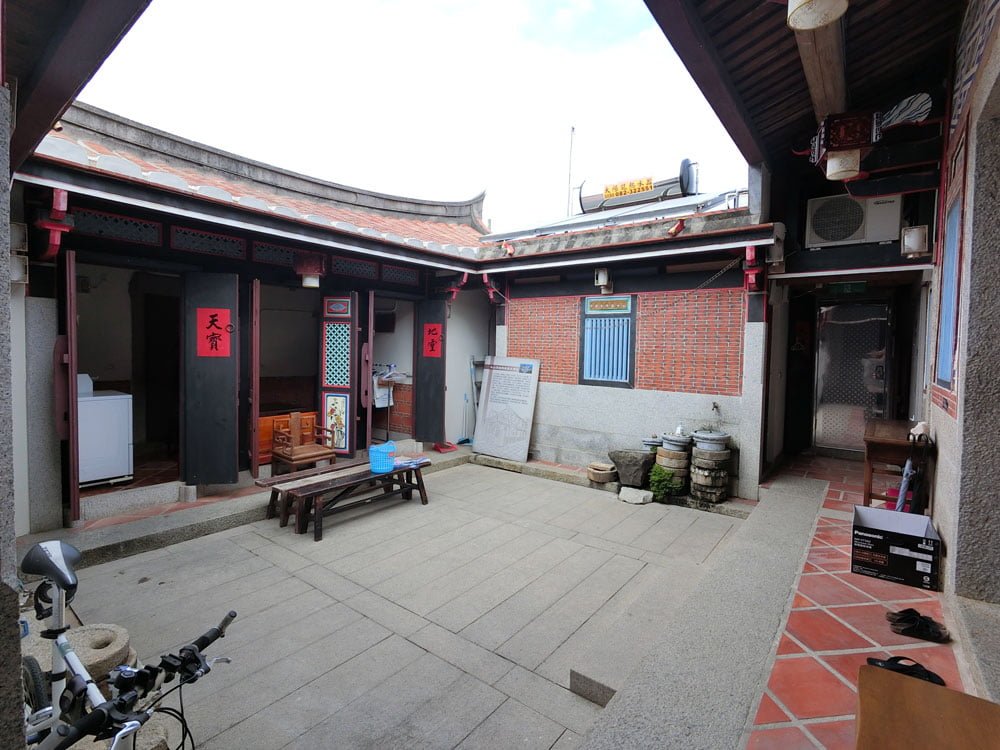
There are great communal spaces as well, and probably my only complaint is that the bunk mattresses are more like bed padding than actual mattress so it can be tough if you like softer beds (like me). I highly recommend independent travellers to check this place out.
Check out Beishan Old Western Style House 北山古洋樓 on booking.com [affiliate link] for more info.
Have you been to Kinmen? What was your favourite thing to do there?
Love Taiwan’s offshore islands? Check out Taitung’s Green Island aka Lyudao or Orchid Island aka Lanyu on the east coast for some beautiful scenic island life or check out the Matsu Islands which are also very close to China.



